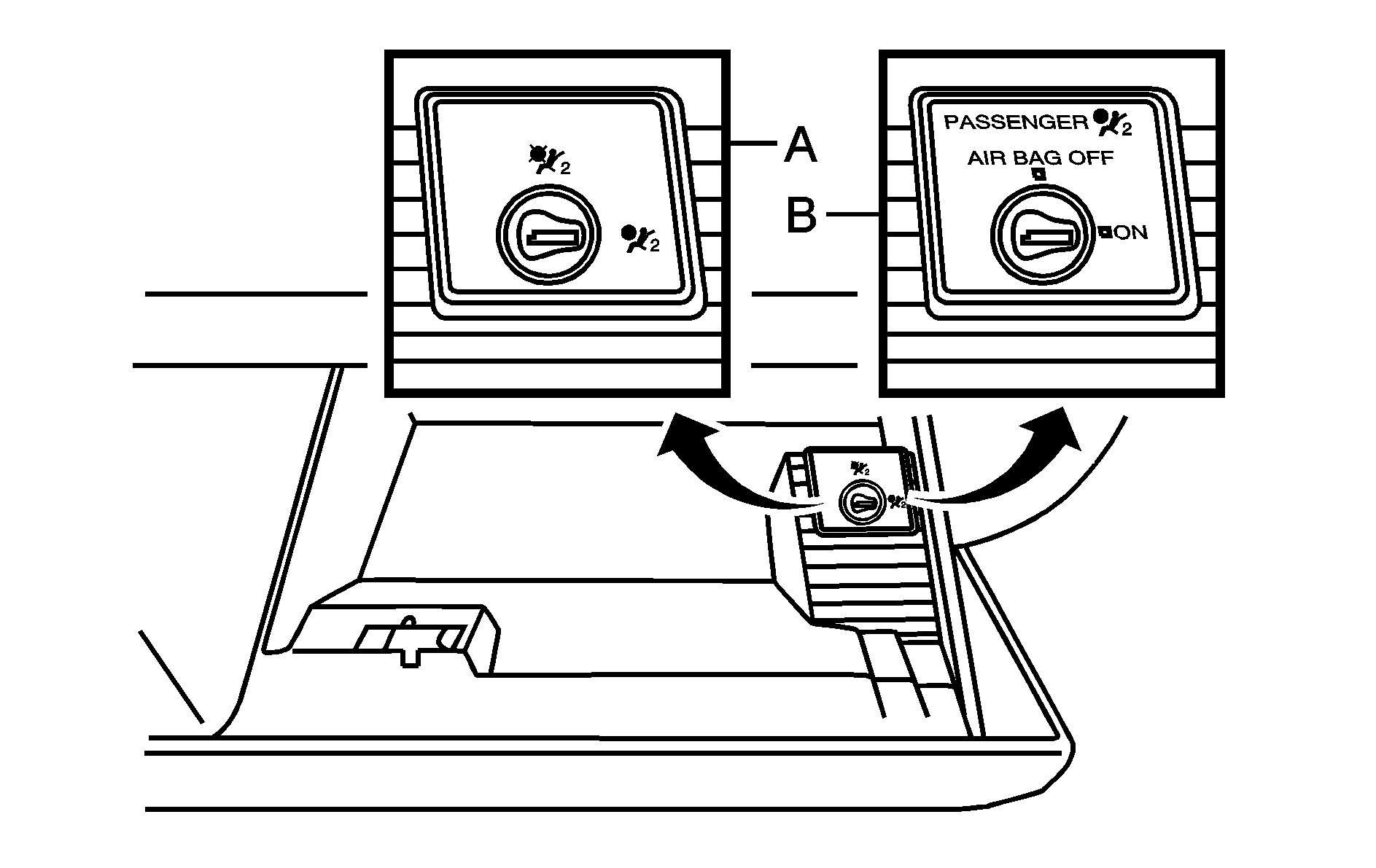Your vehicle has airbags. There is an airbag off switch in the glove box you can use to turn off the passenger's frontal airbag and side impact airbag (if equipped). See Airbag Off Switch for more on this including important safety information.

Canadian Switch
United States Switch
Unless the passenger's airbag or airbags have been turned off, never put a rear-facing child restraint in this vehicle. Here is why:
Caution: A child in a rear-facing child restraint can be seriously injured or killed if the passenger's airbag inflates. This is because the back of the rear-facing child restraint would be very close to the inflating airbag. Do not use a rear-facing child restraint in this vehicle unless the passenger's frontal airbag and side impact airbag (if equipped) have been turned off.
Even though the airbag off switch is designed to turn off the passenger's frontal airbag and side impact airbag (if equipped), no system is fail-safe, and no one can guarantee that an airbag will not deploy under some unusual circumstance, even though it is turned off. We recommend that rear-facing child restraints be transported in vehicles with a rear seat that will accommodate a rear-facing child restraint, whenever possible. If you need to secure a forward-facing child restraint in the passenger seat, always move the passenger seat as far back as it will go.Caution: If the airbag readiness light ever comes on when you have turned off the passenger's frontal airbag and side impact airbag (if equipped), it means that something may be wrong with the airbag system. The passenger's frontal airbag and side impact airbag (if equipped) could inflate even though the switch is off. If this ever happens, do not let anyone whom the national government has identified as a member of a passenger airbag risk group sit in the passenger's position (for example, do not secure a rear-facing child restraint in your vehicle) until you have your vehicle serviced. See Airbag Off Switch .
There are no top strap anchors in your vehicle. Do not secure a child seat in your vehicle if a national or local law requires that the top strap be anchored, or if the instructions that come with the restraint say that the top strap must be anchored.
- Your vehicle has airbags. See Airbag Off Switch . If your child restraint is forward-facing, always move the seat as far back as it will go before securing it in this seat. See Manual Seats or Six-Way Power Seats . Never use a rear-facing child restraint in this seat unless the airbag is off.
- Find the LATCH anchorages in the passenger seat. See Lower Anchors and Tethers for Children (LATCH) .
- Put the child restraint on the seat.
- Attach and tighten the LATCH attachments on the child restraint to the LATCH anchorages in the vehicle. The child restraint instructions will show you how. See Top Strap if your child restraint has one.
- Push and pull the child restraint in different directions to be sure it is secure.
To remove the child restraint, simply unhook the top tether from the top tether anchorage and then disconnect the LATCH anchorages.
Turn on the passenger's airbag or airbags when you remove the child restraint from the vehicle unless the person who will be sitting there is a member of a passenger airbag risk group. See Airbag Off Switch .
Caution: If the passenger's frontal airbag and side impact airbag (if equipped) are turned off for a person who is not in a risk group identified by the national government, that person will not have the extra protection of an airbag. In a crash, an airbag will not be able to inflate and help protect the person sitting there. Do not turn off the passenger's frontal airbag and side impact airbag (if equipped) unless the person sitting there is in a risk group. See Airbag Off Switch for more on this, including important safety information.
